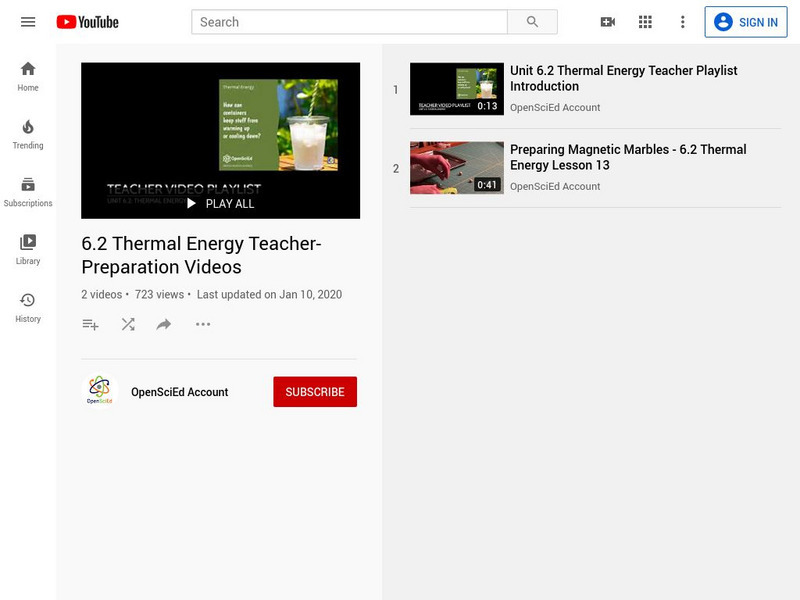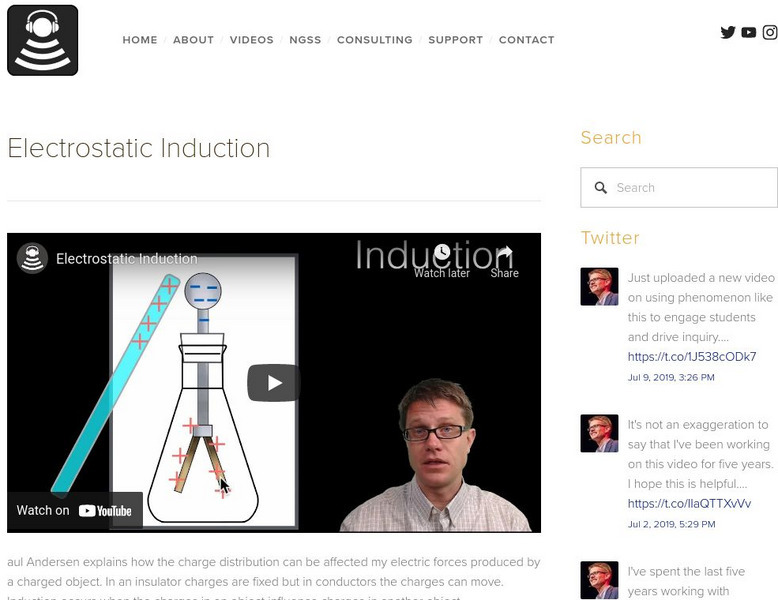Curated Video
Investigating Thermal Insulators
The video discusses two experiments to investigate thermal insulation. The first experiment involves comparing the effectiveness of different insulating materials, while the second experiment investigates the effects of changing the...
Curated Video
I WONDER - What Is An Insulator?
This video is answering the question of what is an insulator.
Curated Video
Basic Transformer Calculations
Learn how to perform basic transformer calculations on this video on basic transformer calculations.
Curated Video
Thermal Insulators Experiments: Comparing the Effectiveness of Different Materials
This is a lecture presentation about an experiment to compare the effectiveness of different materials as thermal insulators. The presenter introduces the concept of thermal insulation and explains how the experiment is set up. They show...
Schooling Online
Chemistry Properties and Structure of Matter: Properties of Matter - Physical Properties of Elements
The pirates are off to find more treasure! Will they make it across the stormy seas? This lesson will survey the physical properties of metals, non-metals and metalloids. Definitions included: physical property, standard ambient...
Rock 'N Learn
Physical Science : Electric Circuits
Physical Science for Kids is the fun way to learn important facts about physical science and get ready for tests. Take a fascinating journey to the Super Science Station to learn about electric circuits.
Physics Girl
DIY Lightning Experiment! Make a SHOCKING Capacitor
Create "lightning" in your living room! Make giant sparks by building up static charge on a homemade 2-plate capacitor, and discharging through a grounded rod. Watch as my friend Ashley agrees to touch the charged-up capacitor. How is it...
DoodleScience
U-Values and Specific Heat Capacity _ GCSE Physics
U-values measure how effective a material is an insulator. The lower the U-value, the better the material is as a heat insulator. For example, a cavity wall has a u-value of 1.6, so most of the heat inside the house will stay in the...
msvgo
Switches, Conductors and Insulators
This nugget explains about the conductors and insulators and activity on identification of conductors and insulators.
Flipping Physics
Polarization of Charge
Three demonstrations of polarization of charge are shown. A balloon polarizes a wall, small pieces of paper, and an aluminum can. The difference between conducting and inducting materials is presented.
Physics Girl
Avoid electric shock getting out of a car!
As the weather gets colder and dryer, you are more likely to get shocked when getting out of a car, touching a door knob, or doing laundry. Is there a way to prevent getting shocked on the car door?
msvgo
Capacitors and Capacitance
This nugget explains the concept and construction of a capacitance and its unit of measurement.
Science Buddies
Basic Circuits Kit: Conductors and Insulators
This video shows how to use a few simple materials (lightbulb, batteries, and alligator clips) to create a circuit to light up a lightbulb. From there, the video shows how to use the circuit to experiment and determine if various...
Professor Dave Explains
Electric Potential, Current, and Resistance
Whenever you plug something into an electrical socket, don't you wonder what's going on? Well you should, as it's pretty neat. What is electricity made of? How did we figure out how to harness this power? Let's take a look!
Professor Dave Explains
Conductivity and Semiconductors
Why do some substances conduct electricity, while others do not? And what is a semiconductor? If we aim to learn about engineering and technology, this will be a very important concept, so let's go through the basics now!
Science Buddies
How to Make Paper Circuits
Would you like to include LED lights in a painting or greeting card? This video will show you how. Paper circuits are made with just a few simple items; you can use a battery and some copper tape to add tiny lights to your project. The...
Curated OER
Electroscope Experiment: Opposites Attract, Likes Repel
Have your young scientists create electroscopes and conduct an experiment using various types of materials (some conductors, some insulators). What happens to the electroscope when each object is passed through its plastic pieces?
OpenSciEd
Open Sci Ed: 6.2 Thermal Energy: Teacher Playlist
This teacher playlist demonstrates the Thermal Energy unit investigations where the students find that there are two ways to transfer energy into a drink: (1) the absorption of light and (2) thermal energy from the warmer air around the...
OpenSciEd
Open Sci Ed: 6.2 Thermal Energy: Student Playlist
This student playlist demonstrates the Thermal Energy unit investigations where the students find that there are two ways to transfer energy into a drink: (1) the absorption of light and (2) thermal energy from the warmer air around the...
Bozeman Science
Bozeman Science: Resistivity
Paul Andersen explains how the resistivity of a material opposes the flow of charge. [4:22]
Bozeman Science
Bozeman Science: Electrostatic Induction
This video narrated by Paul Andersen explains how the charge distribution can be affected my electric forces produced by a charged object. In an insulator charges are fixed but in conductors the charges can move. Induction occurs when...





